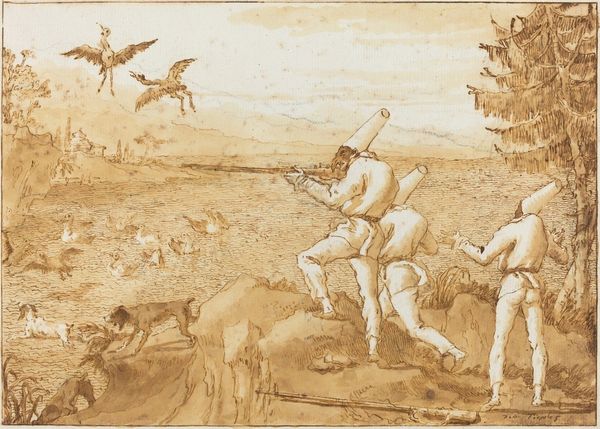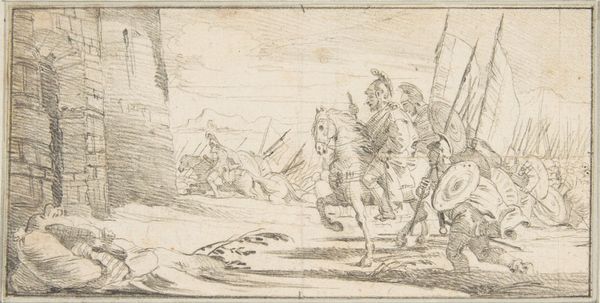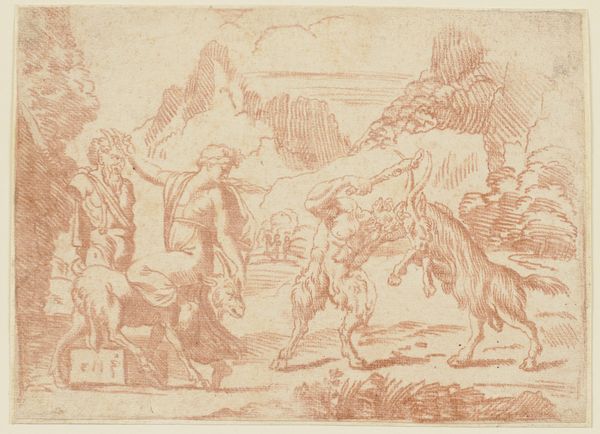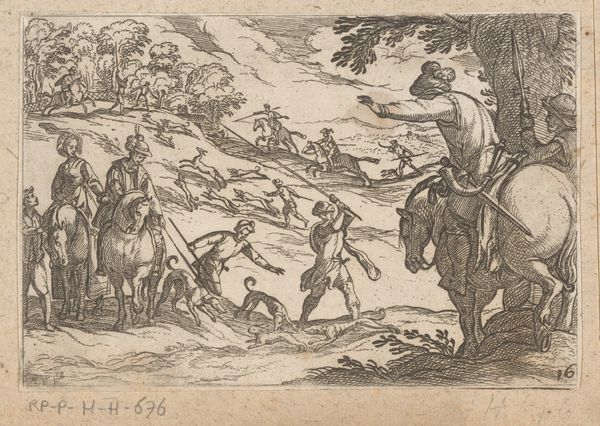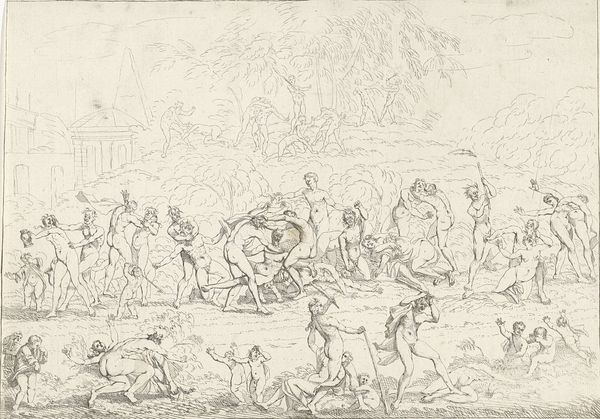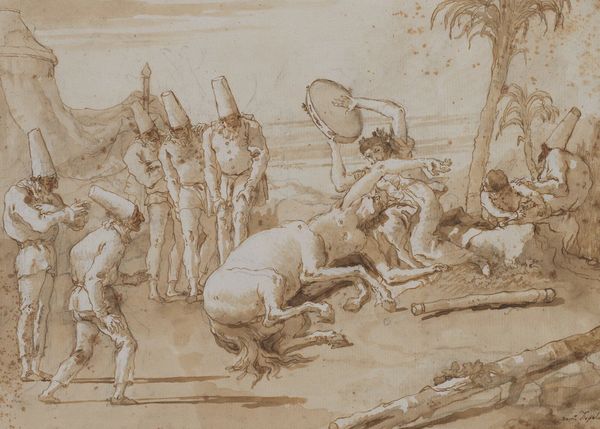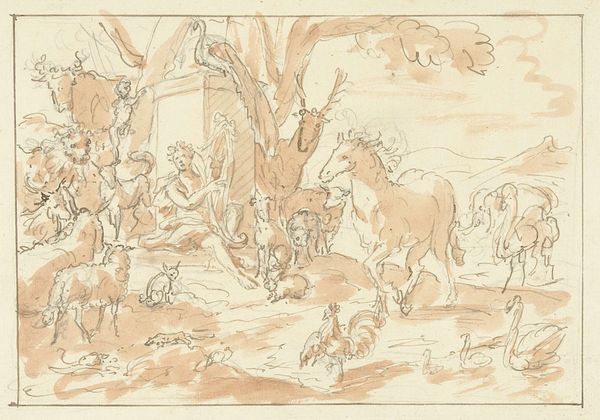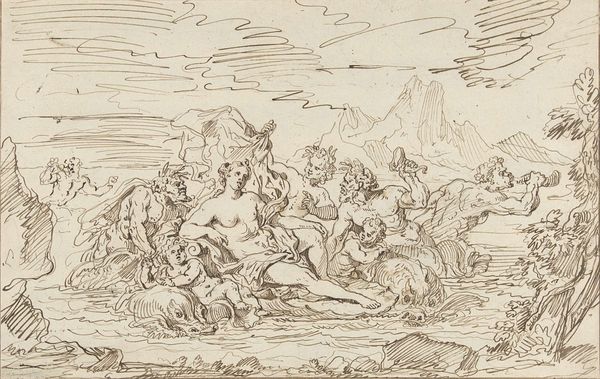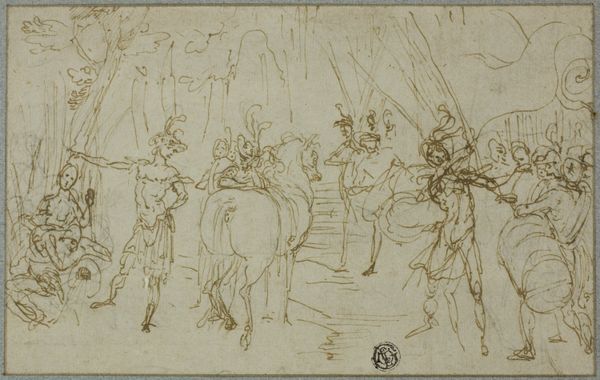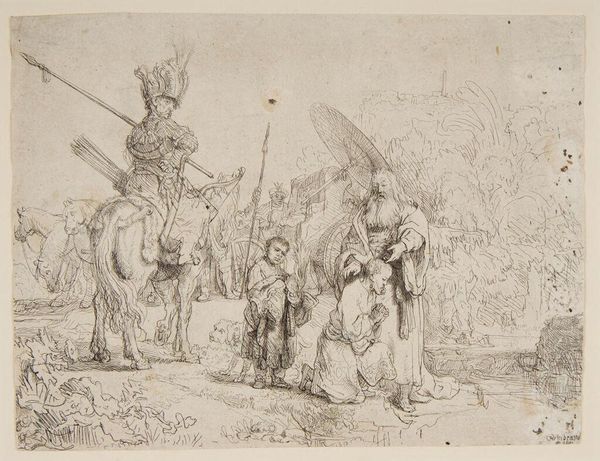
The Punchinello Riding a Camel at the Head of a Caravan c. late 1790s
0:00
0:00
drawing, ink
#
drawing
#
narrative-art
#
landscape
#
figuration
#
ink
#
romanticism
#
genre-painting
Copyright: Public Domain: Artvee
Editor: This is Giovanni Domenico Tiepolo’s “The Punchinello Riding a Camel at the Head of a Caravan,” from the late 1790s, done in ink. It has such a sepia, old-world feel. What jumps out to you when you look at it? Curator: I see a sharp commentary on societal structures and the absurdity of power. The Punchinello figure, traditionally a comedic character, is placed at the head of a caravan. How do we read this placement given the backdrop of late 18th-century Venetian society, rife with inequality? Consider, too, the implications of Orientalism present in the imagery. Editor: Orientalism? Curator: Yes, how does Tiepolo’s depiction perpetuate or perhaps critique Western perceptions of the East? Is the camel a symbol of exoticism? Does the drawing challenge the audience’s understanding of privilege and those who perpetuate it? Is the caravan a satirical representation of humanity moving, perhaps aimlessly, forward under questionable leadership? Editor: That's a really different way of looking at it! I was just seeing a funny drawing with a guy in a long hat riding a camel! So you are looking beyond the literal, into social meanings? Curator: Precisely. It prompts questions about cultural exchange, or rather, the imbalance of power *within* that exchange, and its portrayal through art. Who gets to ride the camel, and who is left walking? The dog seems to know… Editor: I hadn’t thought about that at all. It makes the artwork feel more complex and, frankly, relevant. Now, I see it as much more than just a historical image. Curator: Indeed. And it’s in making these connections – between art, history, and the pressing concerns of our time – that we begin to unlock art’s full potential.
Comments
No comments
Be the first to comment and join the conversation on the ultimate creative platform.
